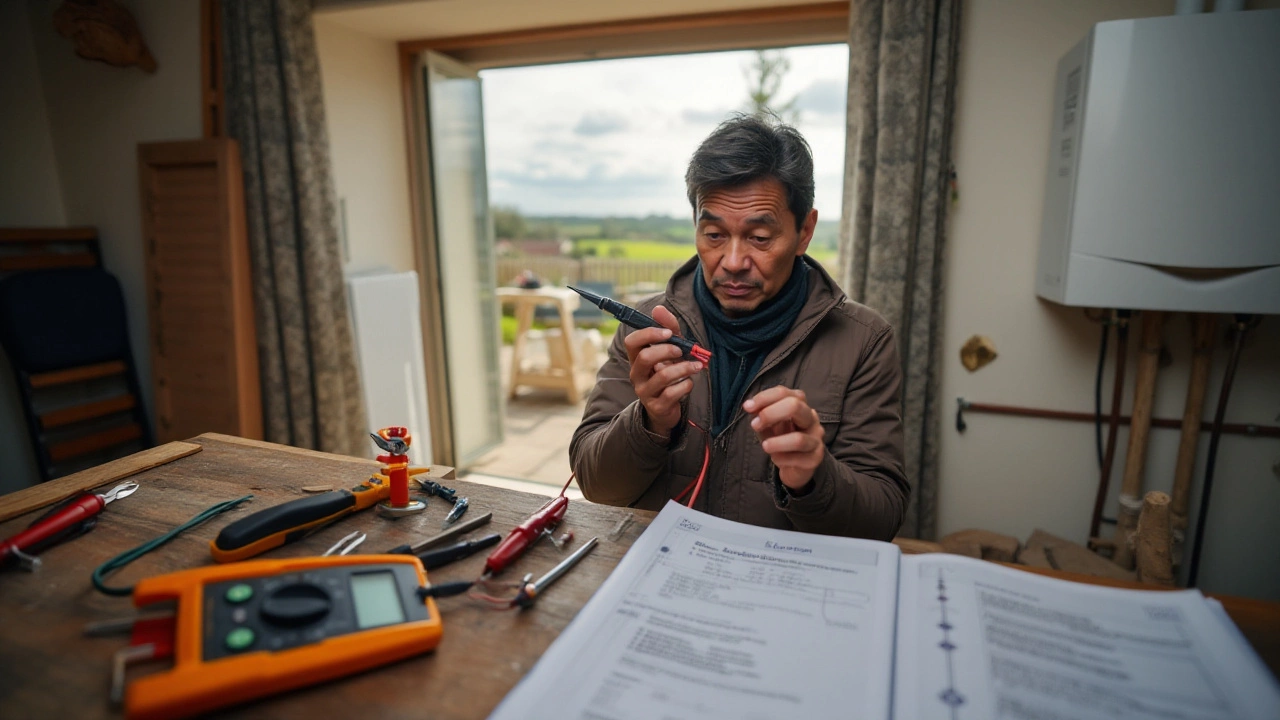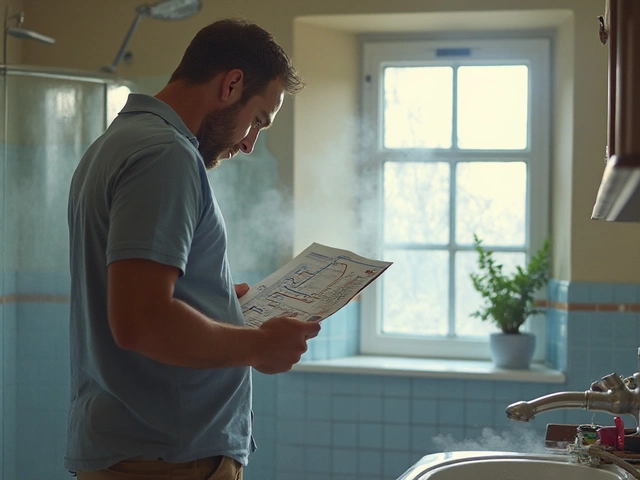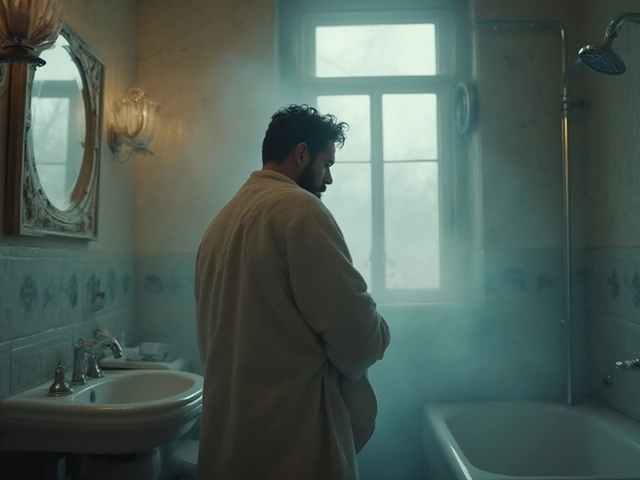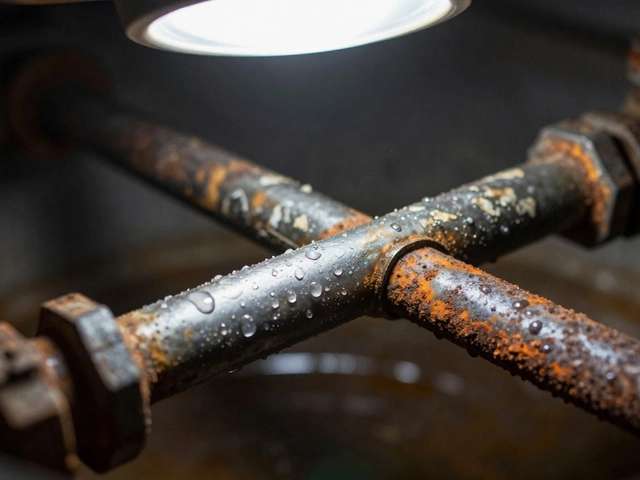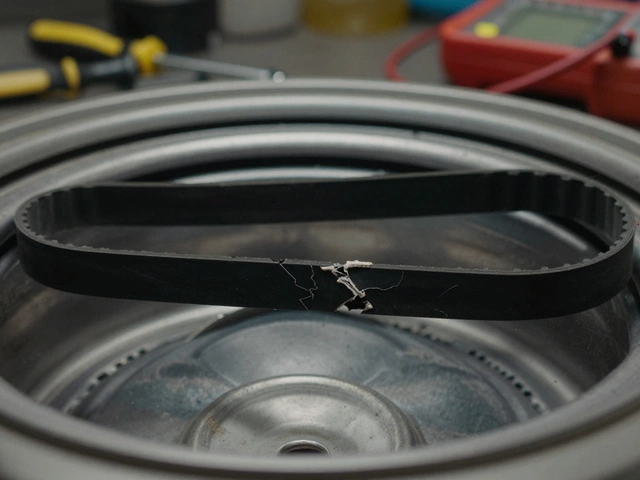A water heater that consistently trips can be a source of frustration and inconvenience. This problem can escalate beyond mere discomfort, leading to potential safety risks if left unchecked. Fortunately, understanding the root cause can guide you toward a solution.
This article aims to demystify why a water heater might trip and how you can tackle this issue effectively. From identifying faulty wiring and components to checking thermostat settings, you'll find practical advice that can save both time and money. Ensuring your water heater functions smoothly not only enhances comfort but also promotes safety in your home. Let's dive into the details and get your water heater back on track.
- Understanding Water Heater Functionality
- Common Causes of a Tripping Water Heater
- Step-by-Step Fixes for the Issue
- Safety Tips to Consider
- Maintenance Tips for Longevity
Understanding Water Heater Functionality
Water heaters are essential devices in modern households, providing the hot water needed for showers, cleaning, and cooking. At their core, most home water heaters operate on a simple principle of heat transfer. A typical unit consists of a tank that stores water and heating elements that elevate the water to the desired temperature. Electric water heaters, in particular, have a thermostat to maintain this temperature, making sure that the water is ready when you need it. Despite their simplicity, understanding how a water heater operates can be vital when it malfunctions, especially the kind that keeps tripping.
Electricity and water don’t have the best relationship under normal circumstances, so safety mechanisms are built into the heater's design to prevent dangerous situations. Normally, a heating element heats the water directly and fairly quickly due to the electricity that flows through it. However, these elements can become faulty over time, which is one common reason a water heater might trip its circuit breaker. These elements are controlled by a thermostat, which measures the water's temperature and turns off the heater once it reaches the set degree. If the thermostat fails, the heating element can overheat, causing the breaker to trip as a protective measure.
"Safety in electrical appliances is paramount, and precautions must never be compromised," notes the International Electrotechnical Commission.
Beyond the basics of water heater operation, some models come equipped with advanced features like energy-saving modes and digital control panels. Such advancements have made it easier to diagnose issues from a user perspective, sometimes allowing for DIY fixes. Pressure relief valves, located at the top or side of the heater, are another integral part of its functionality. They ensure that any excess pressure is safely dissipated, which can often prevent catastrophic failures. Yet, these components also need regular maintenance to function correctly. The delicate balance between heating water efficiently and ensuring safety is at the heart of any modern water heater design.
Another fact to consider is that water heaters are not one-size-fits-all; they come in varying sizes and types. Tankless heaters, for instance, provide hot water on demand, which can conserve energy as they don't keep a large tank’s worth of water heated all the time. Conversely, storage water heaters keep a tank of hot water ready for use, which might be preferable for larger households. Both types need periodic checks, especially older models, to keep them operating efficiently and safely. In some regions, heaters can be affected by the local water hardness, which might require additional steps like descaling. Neglecting these aspects can often lead to a higher risk of the water heater tripping circuits due to inefficiency or component breakdown.
Understanding your water heater's functionality allows you to better appreciate the signs of wear or impending failure. For many homeowners, recognizing these signs, such as unusual noises or fluctuating water temperatures, provides an opportunity for preventive maintenance. By acknowledging the fundamental operations and components, you're better equipped to decide when it might be time to call in a professional or if there are routine checks you can perform yourself. With growing awareness around home safety and energy efficiency, keeping your water heater in top shape becomes not only a matter of comfort but also safety.
Common Causes of a Tripping Water Heater
A water heater that keeps tripping typically signals underlying issues, most of which relate to electrical or mechanical components. Knowing the potential culprits can be the first step in troubleshooting and fixing your water heater repair issues. The most frequent cause of tripping is a faulty thermostat. Water heaters usually have two thermostats, and if either one malfunctions, it might cause the system to overheat and trip. Overheating isn’t just wasteful; it poses significant hazards and must be addressed swiftly.
Another common cause is faulty wiring. With time, wires can become damaged due to pests, moisture, or wear and tear. This damage can lead to electrical resistance, causing the circuit to trip frequently as a safety measure. Ensuring that your water heater’s internal wires and connections are intact and secure is crucial. In this context, the wiring job is something a skilled handyman might opt to check first before delving deeper into appliance troubles.
Additionally, sediment build-up can be a sneaky issue. Over time, minerals from hard water accumulate at the bottom of the tank, forming a layer of sediment that can overheat due to direct contact with the heating element. This not only impedes efficiency but can also cause the heater to trip. Regular maintenance, like flushing the tank, can prevent sediment-related issues and extend the lifespan of your equipment.
We should also not disregard a biased reset button. The reset button in a water heater is designed to aid in restarting the appliance if it overheats. However, if it keeps popping out without apparent cause, you might need to consider replacing it. Such a malfunction often indicates an underlying problem with temperature control or wiring that the button is trying to mitigate. A professional assessment can pinpoint and fix a reset button failure effectively.
Lastly, let’s consider the role of circuit breakers themselves. Sometimes, it's not the water heater at fault but the circuit breaker. If it's not rated correctly for your appliance or if it's nearing the end of its life, it might trip more frequently. It's wise to ensure that the breaker aligns with your water heater’s power requirements. Occasionally, an upgrade to a stronger breaker is needed, particularly if you’re frequently noticing multiple appliances causing overloads in your home’s electrical system.
"Homeowners should prioritize understanding their water heater manuals", advises energy efficiency expert Sarah Turner. "This knowledge can prevent minor electrical issues from becoming major household hazards." Coupling advice like this with hands-on checks can save energy and reduce unexpected repair costs.
In summary, recognizing these common causes can head off unnecessary expenses in water heater maintenance and contribute to a safer home environment. With periodic inspections and necessary adjustments, you can avoid the inconvenience of a tripping water heater.
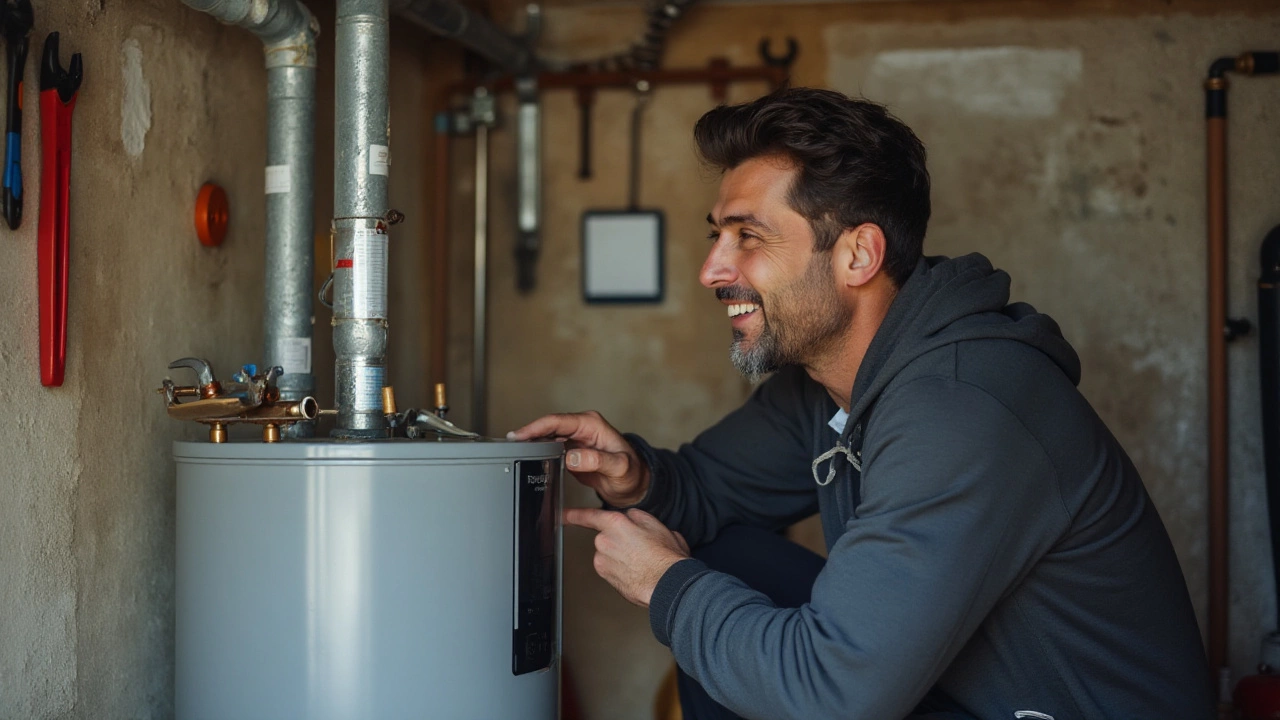
Step-by-Step Fixes for the Issue
When your water heater frequently trips, it can cause frustration, not to mention it can be a sign of underlying electrical complications. Addressing these problems head-on requires a methodical approach. Begin by turning off the power at the circuit breaker to ensure safety during your inspection. This is a crucial step to avoid electrical hazards while examining the internal components of the water heater. Once the power is off, open the access panel to take a look at the wiring and connections.
Inspect for any visible signs of damage or loose parts inside the panel. A common cause for tripping is faulty wiring or a burnt-out connection. Check the thermostat as well; it should be set to a reasonable temperature, around 120 degrees Fahrenheit, to prevent overheating. It's not uncommon for a malfunctioning thermostat to cause the heater to work overtime, leading to tripping issues. If you're comfortable with handling electrical components, use a multimeter to test the thermostat and heating elements for continuity and replace them if needed.
In certain scenarios, sediment build-up in the tank can force the water heater to work harder, resulting in it tripping the circuit breaker. Regular maintenance is key here. Flush the tank to remove sediment accumulation, which can improve efficiency and reduce stress on the unit. Draining a few gallons of water from the tank periodically can prevent this issue from recurring. An additional fix involves checking the breaker itself; sometimes, it might be faulty or need replacing due to age or wear and tear. If none of these steps resolve the issue, it might be time for a professional assessment.
A professional electrician can ensure all electrical connections and components are operating correctly, removing any lingering doubt about your water heater's reliability. As the acclaimed energy expert, John Brooks, puts it:
"Routine check-ups and mindful maintenance can significantly enhance the lifespan and efficiency of your home appliances."Taking these steps not only addresses the immediate tripping problem but also contributes to the overall health of your water heater, ensuring peace of mind through preventative maintenance.
To sum up, here are the essential steps you can follow should your water heater be causing trouble:
- Turn off power at the circuit breaker before any inspection.
- Check internal wiring and thermostat settings for irregularities.
- Flush the tank to remove any sediment build-up.
- Test and possibly replace the circuit breaker if it’s faulty.
- Consult with a professional if problems persist for a comprehensive inspection.
Following these steps diligently can mitigate the inconvenience of unexpected tripping, making sure the climate in your household remains comfortable regardless of the season.
Safety Tips to Consider
Any task involving electricity and appliances like a water heater demands a meticulous approach, primarily due to the risks of electric shocks or even fire hazards. Understanding that safety is never overemphasized is essential. A tripping water heater indicates an electrical issue, and navigating this requires not only patience but also caution. Begin your inspection by switching off the power supply to the unit from your home's main electrical panel. This step is non-negotiable to prevent any accidental electrocution while you work. Always use tools that are insulated, and if you're not confident about handling electrical equipment, it's prudent to consult a certified electrician. An expert ensures that the job is done safely and might offer insights that prove invaluable for future use.
Before diving into repairs, it's crucial to have a good understanding of the water heater's layout. This involves knowing where the elements, thermostats, and reset buttons are located. Using the manufacturer's manual can help familiarize yourself with these components, ensuring you know exactly what you're dealing with. When testing parts such as the thermostats or heating elements, make sure the equipment you're using is in good condition and provides accurate readings. Faulty tools can lead you to incorrect conclusions and potentially cause further damage to the unit, which can be an unnecessary expense.
Water heaters often pose a dual threat—water and electricity. Inspect for any signs of water leakage or moisture accumulation near the power sources. A small puddle might seem harmless, but when in contact with electrical components, it could lead to serious hazards. Keep the area around the water heater dry and clear of any debris to ensure a safer working environment. Establishing a clear zone reduces the chance of mishaps, especially if children or pets are around, who might unknowingly tamper with the equipment.
"Remember, working with electrical appliances requires vigilance and respect for safety protocols," advises Tom Ferguson, a veteran electrician with over 30 years in the field.
If at any moment you smell something burning or see sparks, cease all repair activities immediately and disconnect the unit. Contact a professional, as this usually indicates a more severe underlying problem that needs specialized attention. It's always better to err on the side of caution, as appliances like water heaters can be unpredictable when malfunctioning. Regular inspections by professionals can prevent the majority of these risks by identifying potential weak spots early on.
Lastly, consider installing a surge protector for your water heater. Electrical surges are a common cause of tripping and can damage sensitive components in a heater. A surge protector safeguards against unexpected spikes in voltage, providing an added layer of security for your equipment. These devices are relatively inexpensive and easy to install, ensuring that your heating system is shielded against common electrical fluctuations. With these safety tips, you're on the path to handling your water heater repairs not just effectively but safely as well.
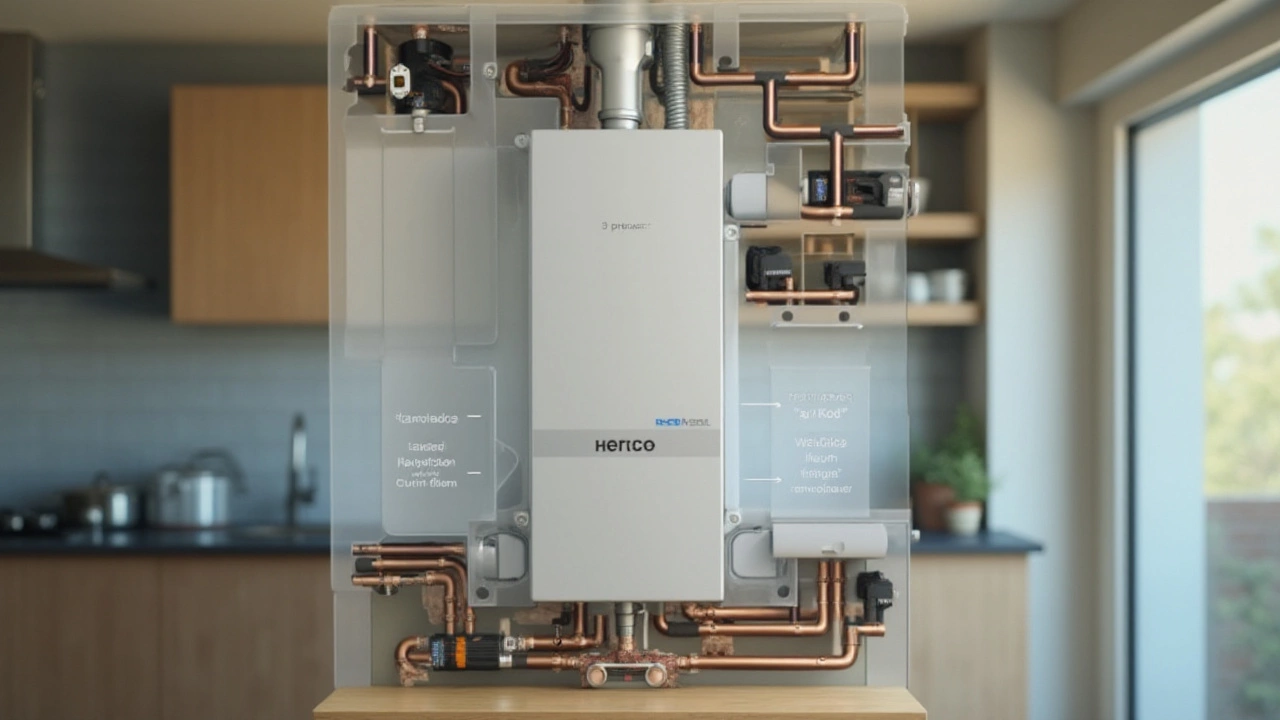
Maintenance Tips for Longevity
Keeping your water heater in top-notch condition involves regular water heater maintenance and a touch of care. These proactive steps can significantly extend your heater's lifespan while boosting efficiency. An often-overlooked but useful practice is draining the tank periodically. Over time, sediment can build up at the bottom of the tank, leading to reduced efficiency and increased wear and tear. Aim to drain your water heater at least once a year, removing any mineral build-up and ensuring that the unit operates smoothly.
Another key aspect of maintaining your water heater is setting the thermostat to a safe but efficient temperature. While it might be tempting to crank up the heat for those extra hot showers, doing so can overwork the heater and increase electricity consumption. Most experts recommend setting the thermostat to 120 degrees Fahrenheit (about 49 degrees Celsius). This temperature is hot enough to ensure comfortable showers and also prevents scalding accidents. Water temperatures above this setting tend to expedite wear on the unit and can cause increased energy bills.
Insulating your water heater tank and pipes is one of the simplest but most effective ways to improve efficiency and extend its life. This is particularly helpful if your water heater is located in a cold area like a garage or an unheated basement. Insulation helps retain heat, minimizing the energy needed to maintain the desired water temperature. You can find quality insulation materials designed specifically for water heaters at most hardware stores. Remember, while insulating, ensure you don't block the thermostat or interfere with any of the operating components.
Regularly inspecting the anode rod is another preventive measure to keep your water heater in prime condition. This sacrificial rod is designed to attract minerals that would otherwise corrode the tank lining. Over time, the anode rod can dissolve completely. Check the rod at least annually and replace it if it's corroded more than halfway. A new anode rod costs far less than replacing the entire heater, making this inspection a small but mighty preventive step.
Listening for unusual noises from your water heater can also alert you to potential issues before they become major problems. Gurgling or popping sounds can indicate sediment build-up, while hissing might suggest a leak or condensation problem. If you notice any unusual noises, it’s wise to investigate or call in a professional to ensure there aren’t deeper issues at play. Being attentive to such signs can protect your unit from further damage.
According to Smith & Johnson Plumbing, "Regular maintenance not only extends the life of your water heater, but can also save you up to 15% on energy bills annually."
For those who prefer a structured approach, creating a maintenance calendar can help ensure you’re checking and servicing your heater on schedule. In addition to the tips mentioned above, remember to keep an eye on any manufacturer-specific maintenance advice that might be provided in your water heater's manual.

